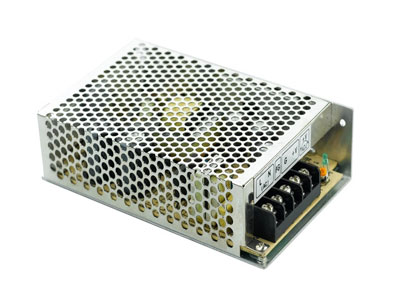Key Takeaway
DC (Direct Current) power supply delivers electricity that flows in one constant direction. It typically comes from batteries, solar cells, or AC/DC converters. DC power is ideal for electronic devices as it provides a stable voltage.
AC (Alternating Current) power supply delivers electricity that changes direction periodically. This type of power is what you get from standard wall outlets. AC power is used for most household appliances and industrial equipment due to its ability to travel long distances without significant loss.
Basic Definitions
In industrial applications, understanding the types of power supplies is crucial. DC (Direct Current) power supply provides a constant voltage or current, ensuring a stable flow of electricity. It’s like water flowing steadily through a hose without changing direction. On the other hand, AC (Alternating Current) power supply delivers electricity where the current changes direction periodically. Imagine the tide going in and out regularly. This alternating nature makes AC power supply efficient for transmitting electricity over long distances, which is why it’s commonly used in homes and businesses.

Key Differences
When discussing the key differences between DC and AC power supplies, it’s important to understand their fundamental characteristics. DC power, or direct current, flows in one direction and maintains a consistent voltage level. This stability makes it ideal for applications where a reliable power source is crucial, such as in battery-operated devices or sensitive electronic circuits. On the other hand, AC power, or alternating current, changes its direction periodically, which allows it to vary its voltage levels. This alternating nature enables the use of transformers to adjust the voltage, making AC power more suitable for long-distance transmission and distribution.
AC power’s ability to be transformed to different voltage levels is a significant advantage in power distribution systems. This versatility is why AC power is commonly used in power grids, allowing electricity to be efficiently transmitted over long distances with minimal energy losses. Conversely, while DC power is excellent for providing stable voltage, its inefficiency in long-distance transmission limits its use to applications where proximity to the power source is feasible. Thus, understanding these differences is crucial for engineers when determining the most appropriate power supply for specific industrial applications.
Applications and Use Cases
In industrial environments, both DC and AC power supplies play vital roles, each catering to different needs. DC power supply is predominantly used in low-voltage applications. It is essential for charging batteries, powering automotive systems, and operating electronic devices like computers and mobile phones. These applications benefit from DC power’s consistent and stable voltage, which is critical for the reliable operation of sensitive electronics. In contrast, AC power supply is favored for high-voltage applications. It is integral to the functioning of power grids, machinery, household appliances, and industrial equipment. The ease of transforming AC power to various voltage levels enhances its utility in diverse industrial and residential settings.
The widespread use of AC power in high-voltage applications is due to its ability to be transmitted efficiently over long distances. This characteristic makes AC power the backbone of electrical infrastructure, ensuring that electricity reaches urban, suburban, and rural areas effectively. On the other hand, DC power’s stability makes it indispensable in applications where maintaining a constant voltage is crucial. Understanding these specific use cases helps industrial engineers select the appropriate power supply based on the operational requirements and constraints of their projects.
Advantages and Disadvantages
Evaluating the advantages and disadvantages of DC and AC power supplies is essential for making informed decisions in industrial applications. One of the main advantages of DC power is its stable and consistent voltage, which is vital for sensitive electronic devices. DC power is also easy to store in batteries, making it a reliable power source for portable devices. However, a significant drawback of DC power is its inefficiency in long-distance transmission, resulting in considerable energy losses.
AC power supply, conversely, excels in long-distance transmission due to its ability to be easily converted to different voltage levels using transformers. This versatility makes AC power ideal for a wide range of applications, from powering homes to running industrial machinery. Nevertheless, the primary disadvantage of AC power lies in its complexity and the potential for more severe electric shocks compared to DC power. Despite these drawbacks, AC power remains the preferred choice for most power distribution systems due to its efficiency and adaptability.
Choosing the Right Power Supply
Selecting the right power supply for industrial applications hinges on several critical factors. Engineers must consider the specific requirements of the application, such as the nature of the load, the distance of power transmission, and the need for voltage transformation. For applications that demand stable and constant voltage, such as electronic devices and low-voltage systems, a DC power supply is the optimal choice. DC power’s reliability ensures that sensitive electronics operate smoothly without voltage fluctuations.
For high-voltage applications and scenarios requiring efficient long-distance power transmission, an AC power supply is more suitable. The ability to transform AC power to different voltage levels using transformers enhances its versatility, making it ideal for powering machinery, household appliances, and extensive industrial equipment. By carefully assessing the application needs, industrial engineers can determine whether DC or AC power is the better fit, ensuring optimal performance and efficiency in their projects. This thoughtful approach helps in achieving reliable and cost-effective power solutions tailored to specific industrial needs.
Conclusion
Both DC and AC power supplies have their unique advantages and applications in industrial settings. DC power supply offers stable and reliable voltage ideal for electronic devices and low-voltage applications. AC power supply, with its ability to efficiently transmit power over long distances and be easily transformed to different voltages, is indispensable for power distribution and high-voltage applications. Understanding the differences and applications of DC and AC power supplies helps engineers make informed decisions to meet specific industrial needs, ensuring efficiency and reliability in their operations.
